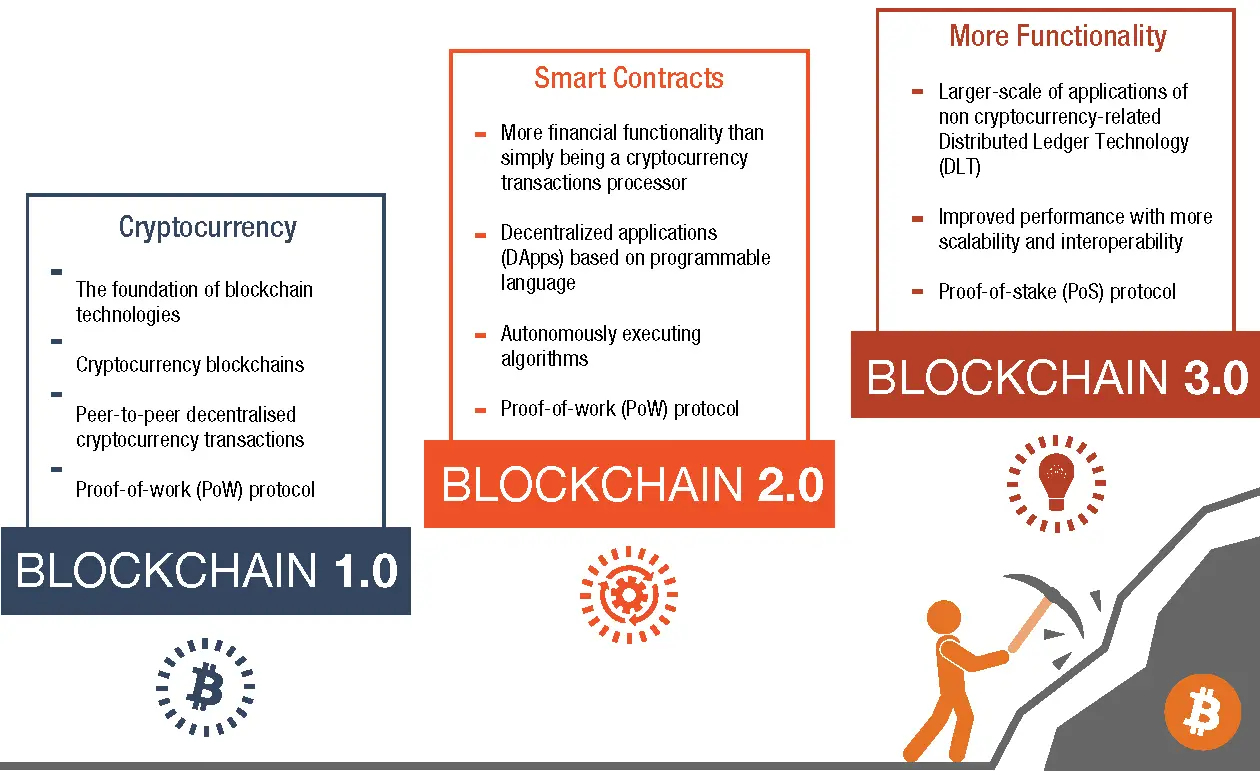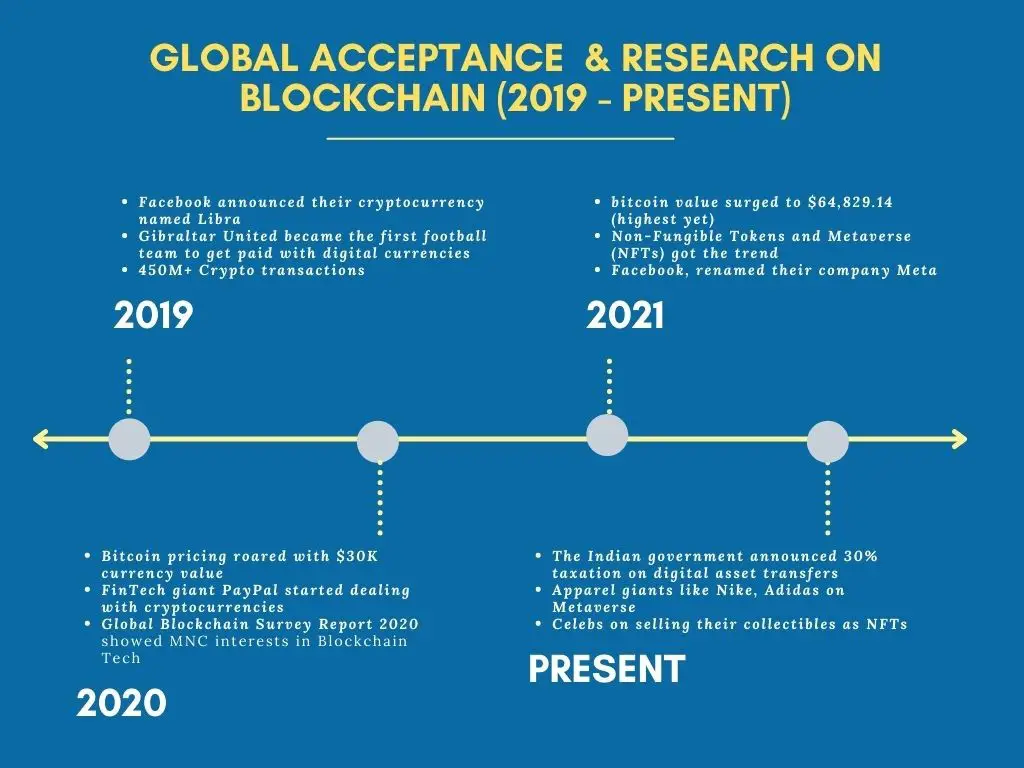The Evolution of Blockchain: From Satoshi To Enterprise Solutions

Blockchain technology, originally conceived as the underlying infrastructure for Bitcoin in 2024, has undergone a remarkable evolution over the past decade. Its initial association with cryptocurrency has gradually expanded to encompass a multitude of transformative applications across various industries.

The Dawn of Bitcoin and the Genesis Block

The genesis of blockchain can be traced back to the release of the Bitcoin whitepaper by an anonymous entity known as Satoshi Nakamoto. Bitcoin, a decentralized digital currency, utilized a distributed ledger system, later dubbed “blockchain,” to maintain a tamper-proof record of all transactions. This system, characterized by its security, transparency, and immutability, laid the foundation for a new era.
Extension to Enterprise Use Cases
Initially focused on cryptocurrency, blockchain technology soon garnered attention from enterprises seeking to harness its capabilities for a wider range of applications. The realization that blockchain’s core principles of decentralization, security, and transparency could be applied to numerous industries, from supply chain management to digital voting, sparked a surge of innovation.
Emergence of Blockchain Platforms and Consortiums
As the potential of blockchain became more apparent, a plethora of platforms emerged, such as Ethereum, allowing developers to create their own blockchain-based applications and solutions. Furthermore, industry-specific consortiums, such as Hyperledger, were formed to collaborate on the development of enterprise-grade blockchain solutions, addressing specific industry challenges and requirements.
Interoperability and Open Standards
The maturation of blockchain technology necessitated the creation of interoperability solutions and open standards. Initiatives such as the Enterprise Ethereum Alliance (EEA) aimed to promote the collaboration of multiple blockchain platforms, facilitating the exchange of data and services. Additionally, the development of open-source frameworks, such as Corda and Hyperledger Fabric, enabled the creation of interoperable blockchain solutions.
Regulation and Governance
Alongside technological advancements, questions about regulation and governance emerged as blockchain gained wider adoption. Governments and regulatory bodies sought to establish frameworks for blockchain-based applications while fostering innovation. Initiatives like the Global Blockchain Business Council (GBBC) aimed to shape regulatory policies and promote ethical and responsible use of blockchain.
Looking Ahead: The Future of Blockchain
The evolution of blockchain continues at a rapid pace, with promising developments on the horizon. The integration of artificial intelligence (AI) and machine learning (ML) techniques holds the potential to enhance blockchain’s capabilities in areas such as fraud detection and data analysis. Additionally, the exploration of quantum computing and its impact on blockchain security is an area of active research.
In conclusion, the transformation of blockchain from its cryptocurrency roots to a versatile enterprise solution has been nothing short of remarkable. The establishment and growth of blockchain platforms, consortiums, and standards have paved the way for its widespread adoption across diverse industries. As the technology matures and regulations evolve, the future of blockchain holds immense potential for innovation and transformative applications that will shape the way we interact, transact, and store data.# The Evolution Of Blockchain: From Satoshi To Enterprise Solutions
Executive Summary
Blockchain technology has come a long way since its humble beginnings as the underlying technology for Bitcoin. Today, blockchain is being used to develop a wide range of enterprise solutions, from supply chain management to healthcare. Blockchain’s potential to revolutionize various industries is vast, and its adoption is only expected to grow in the years to come.
Introduction
Blockchain is a distributed, immutable ledger that allows for the secure and transparent recording of transactions. It is not controlled by any single entity, making it resistant to fraud and manipulation. Each block in the blockchain contains a cryptographic hash of the previous block, which makes it impossible to tamper with the data without the knowledge of all the other nodes in the network.
Top 5 Subtopics
1. Decentralization
Decentralization is blockchain’s most defining feature. It means that the blockchain is not controlled by any single entity, such as a bank or government. Instead, it is maintained by a network of computers spread across the globe. This makes it incredibly resistant to fraud and manipulation.
- No single point of failure
- Increased security
- More transparency
2. Immutability
Immutability means that once data is added to the blockchain, it cannot be changed or deleted. This is because each block in the blockchain contains a cryptographic hash of the previous block. If even a single character is changed in a block, the hash will change, and the entire blockchain will be invalidated.
- Secure and reliable record-keeping
- Guarantees the integrity of data
- Prevents fraud and tampering
3. Transparency
Transparency is another key feature of blockchain. All transactions on the blockchain are recorded in a public ledger, which can be viewed by anyone. This makes it easy to track the movement of funds and other assets.
- Provides accountability and traceability
- Reduces the risk of corruption
- Improves trust and confidence
4. Security
Security is one of the most important features of blockchain. The use of cryptography, hash functions, and public-key encryption makes the blockchain incredibly difficult to hack or tamper with. The consensus mechanism to validate blocks further enhances the security of the network.
- Resistant to fraud and cyber-attacks
- Maintains the integrity of data
-Protects user privacy
5. Smart Contracts
Smart contracts are self-executing contracts that run on the blockchain. They allow for the automatic execution of business logic when certain conditions are met. This can streamline business processes, reduce costs, and improve efficiency.
- Enforce business rules automatically
- Reduce the need for intermediaries
- Improve efficiency and transparency
Conclusion
Blockchain technology has the potential to revolutionize many different industries. Its unique features—decentralization, immutability, transparency, and security—make it ideal for a wide range of applications, from supply chain management to healthcare. Enterprises looking to gain competitive advantage and drive digital transformation should consider investing in blockchain technology.
Keyword Tags
- Blockchain
- Enterprise solutions
- Decentralization
- Immutability
- Transparency
FAQ
1. What is blockchain?
Blockchain is a distributed, immutable ledger that allows for the secure and transparent recording of transactions.
2. How does blockchain work?
Each block in the blockchain contains a cryptographic hash of the previous block, which makes it impossible to tamper with the data without the knowledge of all the other nodes in the network.
3. What are the benefits of blockchain?
Some of the key benefits of blockchain include decentralization, immutability, transparency, security, and the ability to use smart contracts.
4. What are some examples of blockchain use cases?
Some of the most popular blockchain use cases include supply chain management, healthcare, finance, and voting.
5. What is the future of blockchain?
Blockchain technology is still in its early stages of development, but it is clear that it has the potential to revolutionize many different industries.
